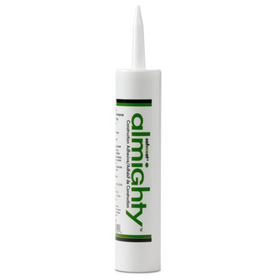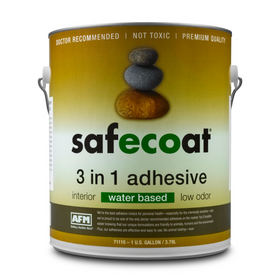
ICF in Trinidad: The Right Technology at the Right Time
Last Updated: Apr 13, 2025The Caribbean twin-island country of Trinidad and Tobago, located at the southern tip of the West Indies, is famous for many things. Vacationers love the country’s gorgeous white-sand beaches next to the blue-green sea. Bird watchers flock to the islands to see the scarlet ibis, the country’s national bird, as well as pygmy owls, wood-creepers, oilbirds, and trogons.
What Trinidad and Tobago aren’t known for yet is building houses using ICF, or insulated concrete forms. If Luke Edwards has anything to say about it, however, ICF is the future in residential construction in the country he calls home.
Edwards is building the first ICF home in his neighborhood of Cascade, near Port of Spain. He’s also working with local contractors and construction companies to make ICF a reality for other potential homeowners.
“As Trinidad is a third-world country, it doesn’t quite have the efficiencies of the United States or Canada,” Edwards says, “so technically, the approvals process began about a year and a half ago. We just started construction this summer.” For Edwards and his wife Gabriella, a yoga instructor, and their twin daughters, building the first ICF house in their neighborhood is an exciting adventure, and well worth the wait.
Table of Contents
- What is ICF?
- ICF: an Alternative to Concrete Block Homes
- ICF as a Resilient Building Material

ICF is a system of expanded polystyrene (EPS) rigid insulation blocks separated by plastic webbing. The blocks function as an integrated concrete form for pouring a concrete wall (rather than using traditional wood plank or plywood forms). ICF blocks come in interlocking sections, so the foundation or wall system neatly fits together. Once the blocks are in place, contractors pour the concrete. Embedded in the insulation are fastener strips, so finishes like drywall and siding can be easily attached. All of these attributes make ICF blocks easy to assemble, and foundations and walls simple to build.
“The speed of ICF construction was really a deciding factor for us as we considered how to build our new home,” Edwards says. “Homes in Trinidad are very concrete heavy. Houses are traditionally constructed with heavy framing and concrete blocks for stability and durability, because of the hurricanes and earthquakes.”
“The concrete core in the middle of ICF construction,” he explains, “gives me a great deal of comfort and assurance in building a new home that can deal with those environmental concerns. Also, Trinidad is very hot. ICF’s thermal mass will help keep the house cool, as the transference of heat to the inside of the house is low.”

Sustainability wasn’t a priority at the beginning, Edwards admits, when the family was first considering a new home. “But I’m in construction. Specifically, I work in roofing. A project I’m working on is a development that features sustainable homes. I saw these houses being built using ICF blocks and thought that’s a great construction technique. The light bulb went on over my head.” Edwards hired the same company, Macon Construction, to build his family’s new home.
Edwards explains that Macon Construction “has been pioneering ICF in Trinidad. The technology is quite prevalent in Venezuela. Some engineers from that country came here and brought the ICF technology with them. Macon jumped at the opportunity to have these engineers join them and brought the technology to the fore, working with local suppliers to create templates for the insulated forms. The forms are now made locally with a propriety agreement between the two companies.”
The first three months of construction were dedicated to earthwork and retaining walls, Edwards says. The next month was spent building the ground floor. “Now, we’re about ready to cast or pour the concrete for the first floor.”
“Trinidad is one of the hottest places in the world,” Edwards says with a laugh, “so a super-insulated house is a no brainer.” What he had to stop and consider, however, was insulating the roof for the planned two-story home. “If the roof isn’t insulated properly, the ICF will keep the heat in, so that’s a major concern." For economic reasons, Edwards decided on traditional metal roof sheeting, which is how 90% of houses in Trinidad are roofed. “I’ll compensate for that with proper insulation,” he says, “probably by using rigid board insulation with a radiant barrier beneath the roof.”

ICF as a Resilient Building Material
As construction continues, the family is considering other ways in which their home could be sustainable. “LEDs without question,” Edwards says about interior lighting. As for windows, Edwards is considering standard sash windows that can be opened to invite in sea breezes. “Security here is a big issue, so all the windows need to be burglar-proof. No debate.”
As for electricity, “Trinidad and Tobago have the cheapest electricity in the western hemisphere,” he explains, “so solar and wind power hasn’t caught on here yet. They aren’t economically viable. Nonetheless, steps are being taken on the legislative and government levels to make solar and wind options for powering homes, but we still have a long way to go.”
The family’s new home is situated east to west, in a valley. “The sun comes along a hill, and there’s only afternoon exposure to intense sun while we enjoy glorious views of the sea.” Gabriella “is much more tied into a culture that has an environmental mindset,” Edwards says. “She’s even more gung-ho than I am on building a more sustainable home. What sold it for me was that ICF is much cheaper and faster than building a typical home.”
The couple’s daughters are also enthusiastically on board with living in the neighborhood’s first ICF-constructed home. “We’ve explained to them about the type of construction we’re doing and they’re thrilled to bits about it. They know Daddy’s in construction, but love spending time talking about we’re doing with our new home. These are big lessons for them and priceless moments for us together.”
As for the neighbors? “Everyone who drives past the house is dumbfounded,” Edwards says with a laugh. “They say things like, ‘You’re building a house out of Styrofoam? How does that work? It’s going to fall down.’ They’re really skeptical about it, but I’m an optimist.”
“Certainly, and honestly, it’s a risk. ICF is a new building technology on the island. It’s not well established in the labor force. Macon is well versed and competent in ICF. Workers on the ground, however, who are mixing the concrete and building the forms may not be as experienced as we want them to be. Still, I’m confident. Macon has been going through a growth spurt that’s unprecedented. The company has taken on a lot of homes since I started working with them. ICF appears to be the right technology at the right time in Trinidad.”
Camille LeFevre
Camille LeFevre is an architecture and design writer based in the Twin Cities.












